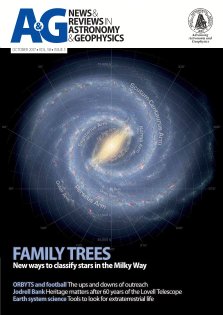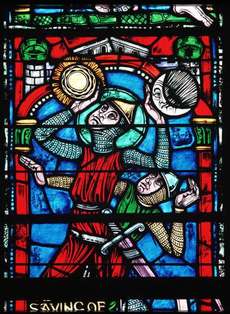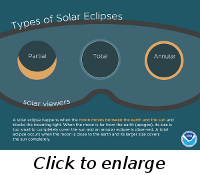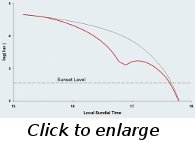Two Professors and a Madman
 Via my Google newsfeed I came across a fascinating paper, published in the current issue of the journal Astronomy & Geophysics, which makes the case that events described in the biblical book of Joshua can be identified with a solar eclipse occurring on October 30 in the year 1207 BCE. The authors claim this is significant for two reasons:
Via my Google newsfeed I came across a fascinating paper, published in the current issue of the journal Astronomy & Geophysics, which makes the case that events described in the biblical book of Joshua can be identified with a solar eclipse occurring on October 30 in the year 1207 BCE. The authors claim this is significant for two reasons:
- It is the earliest recorded account of an eclipse.
- It provides a precise date for the reign of the Egyptian ruler Ramasses the Great.
Authors Colin J Humphreys and W Graeme Waddington[1] make use of biblical scholarship which interprets Joshua 10:12-13 as a description of a solar eclipse. This is not a new interpretation. The authors credit linguist Robert Wilson as the “maybe the first” (in 1918) to challenge the accepted English translations of the account, which follow the Authorized Version of 1611 (the “King James”).
What the authors add, with the aid of computers that can now very quickly do the calculations necessary to “predict” eclipses of the past just as they do eclipses of the future, is a candidate eclipse that fits the place and assumed time frame of the accompanying event—a battle. In doing so, they are able to identify one and only one eclipse that fits.
My interest in this research is two-fold. First, I find it a fascinating account of the scientific detective work involved. I love a good mystery, and this one encompasses subjects to which I am drawn—biblical history and astronomy—in a fairly unique way.[2]
Second, this specific story brings to mind for me personally an amusing recollection of an occasion when I was exposed to a claim of a very different, purportedly scientific, and astoundingly ignorant finding related to the same biblical story. I will get to this recollection after my brief synopsis of the new theory.
October 30, 1207 BCE
 I will attempt here to summarize the key points of the paper. Without simply copying large swaths of the authors’ work, I am unable to offer nearly enough detail to adequately explain the reasons for their conclusion. I will try. But, really, I encourage anyone with enough interest to have read this far to read the paper itself. It is freely available now through this link from Oxford University Press. I hope ditherers may be curious enough to do so after reading my description of it. I do not know for how long the paper will be freely accessible.
I will attempt here to summarize the key points of the paper. Without simply copying large swaths of the authors’ work, I am unable to offer nearly enough detail to adequately explain the reasons for their conclusion. I will try. But, really, I encourage anyone with enough interest to have read this far to read the paper itself. It is freely available now through this link from Oxford University Press. I hope ditherers may be curious enough to do so after reading my description of it. I do not know for how long the paper will be freely accessible.
The story in Joshua, chapter 10
The first part of the 10th chapter of Joshua sets the stage for an attack by the Israelites at the site of the Canaanite city of Gibeon. Just prior to this attack, the Israelite leader Joshua prays to Yahweh, asking (in the English translation of the NRSV[3], verses 12-13):
“Sun, stand still at Gibeon
And Moon, in the valley of Aijulon.”
His prayer is answered:
And the Sun stood still, and the moon stopped,
until the nation took vengeance on their enemies.
[…] The sun stopped in midheaven,
and did not hurry to set for about a whole day.
What Wilson pointed out in 1918 was that the Hebrew word dôm, translated here as “stood still,” means to be silent, dumb, or still. The word ’amah, here “stopped,” is “a broader word, meaning to stop or stand.” So, an alternate reading of the original Hebrew is that “the sun [stopped shining] and the moon stopped [shining].”
Further, the authors write, “Wilson claimed that in Babylonian cuneiform texts there are words with the same root as the Hebrew dôm that are used in Babylonian astronomical tablets in connection with eclipses, meaning ’to be dark’.”
This proposed interpretation of the passage is not really news, nor is it all that remarkable. What the Hebrew Bible records is the ancient Israelites’ national epic, and the history recorded here in Joshua would’ve been passed down orally for 500+ years before being written down, at least into anything like its form in the book.[4] Many of this national epic’s most dramatic tales can be assumed to be based on extraordinary natural events (as in countless examples from the ancient world). And as mentioned, this particular interpretation is not new.
Which eclipse, then?
So in 1918 it would have been practically impossible to calculate the dates of eclipses falling within the theoretical parameters of time and place for the reported battle. Attempts have been made since. The authors mention a study by J F A Sawyer published in 1972. He concluded there was no total solar eclipse viewable from the right location anytime during the possible time frame (a large one, because it is difficult to narrow the date range of the Israelites’ rise in Canaan).
 This conclusion stood until the authors of this new paper expanded the search to include annular eclipses. In this paper, the authors explain the difference between a total and annular eclipse, and provide a fairly detailed analysis of how the particular annular eclipse they identify would have appeared on the ground at the site of the battle. The graph below plots the amount of sunlight observed at the location during the event, and is key to their interpretation of this sentence from Joshua 10:13:
This conclusion stood until the authors of this new paper expanded the search to include annular eclipses. In this paper, the authors explain the difference between a total and annular eclipse, and provide a fairly detailed analysis of how the particular annular eclipse they identify would have appeared on the ground at the site of the battle. The graph below plots the amount of sunlight observed at the location during the event, and is key to their interpretation of this sentence from Joshua 10:13:
The sun stopped in midheaven,
and did not hurry to set for about a whole day.
 Briefly, they argue that witnesses would have experienced an elongated, double dusk—seeming as if night began to fall, hesitated, brightened for a time (as if for another day), before finally falling into dusk and then a moonless night.
Briefly, they argue that witnesses would have experienced an elongated, double dusk—seeming as if night began to fall, hesitated, brightened for a time (as if for another day), before finally falling into dusk and then a moonless night.
Anyone accustomed to reading historical analyses of pre-exilic biblical stories, knows to the extent these are based on oral traditions only written down (at least in their final form) hundreds of years after events they describe. That it is always unwise to expect them to record accurate historical detail such as we might expect (but don’t always get) in historical reports of very recent events. How realistic is it of the authors to look to find accurate-ish details of an event occurring (they conclude) on October 30 in the year 1207 BCE in a book written, probably, in the late 600s BCE?[5]
Not realistic at all, really. But, the early chapters of Joshua are thought to preserve some of the earliest history of the Israelite tribes in Canaan. And, there is a detail the authors of this paper do not mention in the account of the battle at Gibeon that lends credence to its possible historicity. It is right there in the middle of the key verses. I have omitted it before, but below I have highlighted it (Joshua 10:12-13):
“Sun, stand still at Gibeon
And Moon, in the valley of Aijulon.”
And the Sun stood still, and the moon stopped,
until the nation took vengeance on their enemies.
Is this not written in the Book of Jashar?
The sun stopped in midheaven,
and did not hurry to set for about a whole day.
This reference to the Book of Jashar as the source of the couplet memorializing the unique event is an indicator of its antiquity. It is an extra-biblical source (now lost) which may well have preserved the memory of an extraordinary event.[6] And as Humphreys and Waddington show, this was the only impressive solar eclipse visible in the region over a period of at least 400 years.
Don’t take it from me
That’s all I’ve got to try to convince you to read the paper. I have shortchanged its interesting account of the technical aspects of the search for a candidate eclipse and the detailed description of its appearance, duration, and effects. As I’ve said, I don’t know that it will be freely available online for long[7]. Before I get to the second part of this post, my personal recollection of a very different take on this fantastical story from the Hebrew Bible, I will reproduce here the authors’ conclusion:
A reinterpretation of a puzzling passage in the Old Testament book of Joshua suggests that a solar eclipse was being reported. Calculations show that this event could be the annular solar eclipse of 30 October 1207 BC. If accepted, this appears to be the oldest solar eclipse recorded. When combined with Egyptian records, this eclipse enables us to hone the most accurate dates available for the reign of the famous Egyptian pharaoh Ramesses the Great to be 1276–1210 BC ±1 year. This work further suggests that the expressions currently used for calculating ΔT, the accumulated clock error due to changes in the Earth’s rate of rotation, can be extended back 500 years from 700 BC to 1200 BC.
As for the chances their interpretation and analysis clears the high bar necessary to see this passage accepted by the scientific community as a confirmed report of an eclipse, becoming the earliest known, I don’t know. The authors have a bias toward accepting the basic historicity of the Bible that is not widely shared by mainstream scholars. I’m sure the paper will be met with healthy skepticism. Still, I think they argue their case well and have outlined a scenario that is at least plausible. Compelling? Maybe.
One day, circa 1975 CE
 The personal experience brought to mind by this paper occurred sometime in the mid 1970s. A fortuitous discovery (more on this later) establishes the fall of 1974 as perhaps the earliest date and, I think, the fall of 1975 as the likeliest date for it. It might have been as late as the fall of 1976. At any rate I think it occurred during fall and I’ll guess it was 1975. I would have then recently turned fifteen.
The personal experience brought to mind by this paper occurred sometime in the mid 1970s. A fortuitous discovery (more on this later) establishes the fall of 1974 as perhaps the earliest date and, I think, the fall of 1975 as the likeliest date for it. It might have been as late as the fall of 1976. At any rate I think it occurred during fall and I’ll guess it was 1975. I would have then recently turned fifteen.
The Vietnam War was over, Gerald Ford was President of a Watergate-wounded country, and the Swingin’ A’s were winning their third straight World Series. In science, Wallace Smith Broecker, writing the first modern paper on the subject, coined the term “global warming.” The US and the USSR met in space for the first time (Apollo-Soyuz), and the US launched Viking I to explore Mars.
In 1975 I had yet to take my first high school biology course, so had very little (if any) formal exposure to the work of Charles Darwin. No geology either, so nothing on Charles Lyell. I had seen and heard a lot of misinformation about science, evolution in particular, much of it as facile as that in the Jack Chick polemic of “Big Daddy.”[8] I did read quite a bit, though I am unable to recall just what (books on astronomy and the space program for sure). I used libraries—school and county—but, apart from unremarkable middle school science classes, it was probably newspapers, our family’s World Book Encyclopedia and, especially, my dad’s subscription to The National Geographic that comprised the bulk of my exposure to science at that point.
 Thus equipped, I was trundled off with members of my church’s youth group on the long ride to the Mount Hermon Conference Center south of San Francisco in the Santa Cruz Mountains. At 300 miles from our homes near Redding, this must have been for a one- or two-night stay. I can guess at which friends must’ve been along, but I don’t remember who was. If it was the friends I suspect were there, our focus was almost certainly limited to meeting some attractive teenage girls. This, I know, did not happen. I would remember that.
Thus equipped, I was trundled off with members of my church’s youth group on the long ride to the Mount Hermon Conference Center south of San Francisco in the Santa Cruz Mountains. At 300 miles from our homes near Redding, this must have been for a one- or two-night stay. I can guess at which friends must’ve been along, but I don’t remember who was. If it was the friends I suspect were there, our focus was almost certainly limited to meeting some attractive teenage girls. This, I know, did not happen. I would remember that.
Galileo rolls over in his grave
What I do remember is this: the featured speaker was the celebrated Dr Duane Gish.[9] (Celebrated, at least, by a small but enormously influential group of “young earth creationists.” He is the “Madman” of this post’s title.) More than that, I remember vividly three things about the lecture, one of which was spoken by the person who welcomed Gish to the stage and is the nugget that inspired this post. I will leave it for last.
 For all of Gish’s reputation as an orator, I can only recall these two things from his presentation. First, that by way of introduction he quipped, “My name is Gish, which rhymes with fish, but that doesn’t mean I evolved from one.” Hmm, okay. I wasn’t really having any difficulty sussing out the pronunciation of “Gish,” but point taken. As far as the pronunciation of one’s last name having anything to do with one’s evolutionary history, I think I was okay there too.
For all of Gish’s reputation as an orator, I can only recall these two things from his presentation. First, that by way of introduction he quipped, “My name is Gish, which rhymes with fish, but that doesn’t mean I evolved from one.” Hmm, okay. I wasn’t really having any difficulty sussing out the pronunciation of “Gish,” but point taken. As far as the pronunciation of one’s last name having anything to do with one’s evolutionary history, I think I was okay there too.
Second, I remember he at one point railed against the great geologist Charles Lyell and for a period of time led a call-and-response chorus where he would say (something like), “GOD was THERE when the Grand Canyon was carved, was Charles Ly-ELL?” To which the captive audience of a couple hundred or so 13- to 16-year-olds would scream in unison, “NOOO!” And then, “No he wasn’t! GOD was THERE when the Rocky Mountains were raised, was Charles Ly-ELL?” “NOOO!!,” again. So, it is clear, there was a real evidenced-based, scientifically-rigorous presentation to a packed house of thirsty young open minds that night.
But it was the astounding claim made by an enthusiastic acolyte of the good doctor earlier in the evening that really caused my unsophisticated but always skeptical young self to reel. I can honestly say I was ashamed to be there and a part of what I knew even then to be a farce. What did he say? From that stage, to that crowd of youths, (to the best of my ability to reproduce 42 years later) he said:
Have you heard how scientists recently used a computer to try to calculate the position of the stars in the sky thousands of years ago? They discovered an error that could only be corrected when they allowed for the time when God stopped the Sun for a day as recorded in the book of Joshua. Once again the Bible has been proved right!
What he said might have been more eloquently phrased than that. Or less, I just can’t say. But I have the gist of it right. This is not a “recovered memory,” this is something I never forgot. It made an indelible impression. If not before, I knew then what a fraud these guys were. I didn’t know who this individual was, but the celebrated Dr Gish sat on stage with him, sporting a simian grin, “Amening!” that inanity before taking the mic and delivering his own forgettable bit of nonsense.
I was an immature fifteen years old and had never seen a computer. But I knew they weren’t somehow supernatural. I had a least some idea of how calculations, whether done “by hand” or with the aid of an electronic calculator of whatever size, could determine the apparent position of stars (as viewed from a specified location) in the past or future. I knew this wasn’t magic, and I knew what this speaker described was a profoundly ignorant magical fantasy.
I may have been ashamed to be there that night, but today am very happy I was there to witness that. It just may have changed the course of my life!
Postscript
 A link in my Google newsfeed on October 30, exactly 3,224 years to the day after the eclipse described by Humphreys and Waddington, brought that incident to mind. I never forgot it, but I’ve wondered, did this nameless speaker just make up this anecdote out of whole cloth? Was it his lie, or did someone lie to him? I didn’t know.
A link in my Google newsfeed on October 30, exactly 3,224 years to the day after the eclipse described by Humphreys and Waddington, brought that incident to mind. I never forgot it, but I’ve wondered, did this nameless speaker just make up this anecdote out of whole cloth? Was it his lie, or did someone lie to him? I didn’t know.
Some time after I started writing this blog post, I googled “missing time bible account joshua confirmed by science” and found NASA Discovers a ’Lost Day’ in Time?. Good old Snopes![10] Turns out this tall tale has been going around since at least 1936, and relevant to my experience at Mount Hermon, it was given a big boost by its inclusion in Harold Hill’s 1974 book How to Live Like a King’s Kid. (Still available on Amazon—where it gets great reviews!—in an updated 2007 edition.) So the story related by the speaker wasn’t his lie. He was just gullible. Unbelievably, the fabrication persists. I don’t know if the 2007 edition of Hill’s book retains it, but I know which way I’d bet. At least the popular creationist website Answers in Genesis debunks it and includes it in its “Arguments to Avoid” section. Indeed.
—
Notes
- Sir Colin J Humphreys (a Cambridge University physicist) and W Graeme Waddington (an Oxford astrophysicist) have co-authored several papers and at least one book in their efforts to date biblical and other reported ancient events to astronomical phenomena. See also footnote #2.
If I weren’t committed to maintaining the serious nature of this post, I might be tempted to say that the pairing of the author’s names seems suggestive of the Monty Python Upper-Class Twit of the Year skit. [^]
- “Fairly unique” is subjective and probably not all that accurate. Frequent attempts to link biblical events to astronomical phenomena are made. The idea of a comet as the source of Matthew’s “Star of Bethlehem” story is a well-known example, and as I wrote in my previous footnote, the authors of this paper have done so before. See their not-widely-accepted attempt to fix the date of the crucifixion. [^]
- The New Revised Standard Version (NRSV) of the Bible was published in 1989. [^]
- See Wikipedia’s Book of Joshua for a description of the scholarly consensus in regards to the dating of the book. It is often considered part of the “Deuteronomistic History.” The author of Deuteronomy may even have written it. My source for this is Richard Elliott Friedman. His 1987 book Who Wrote the Bible? is undoubtedly dated by now, but I can recommend it as a great introduction for a general audience to the documentary hypothesis. [^]
- See footnote #4. [^]
- See Wikipedia’s page on the Book of Jashar, an ancient document mentioned several times in the Hebrew Bible but otherwise lost to history. Google searches on its title will turn up numerous pages on an 18th-century forgery with the same name. Don’t be fooled, this later mystical text is not the book mentioned in the Bible. [^]
- I have downloaded and saved a PDF copy of the paper. It would not be fair use to link to it here, but I can share it with an interested individual if it is otherwise unavailable. [^]
- What a creepy guy was Jack Chick, the author and sometimes illustrator of the horrifying “Chick tracts.” His over-the-top conservative beliefs eventually resulted in his ostracism from even most evangelical fundamentalists. In addition to the usual litany of their enemies, Chick railed against Catholics. According to his Wikipedia biography, “he was a believer in the King James Only movement, which posits that every English translation of the Bible more recent than 1611 promotes heresy or immorality.” His anti-evolution tract “Big Daddy” is one I remember vividly. Full of ridiculous caricatures of evolutionary theory, it is still in print. [^]
- I know I’ve written more than enough about the late Duane Gish, whose debate technique is immortalized in the term the Gish Gallop. I have only to note that, after completing this post and while putting together these footnotes, I remembered I had invoked his name once before here on my blog. At least I am consistent. [^]
- Snopes has long been an invaluable resource in the never-ending struggle against online misinformation, and in particular against the so-called “urban legends” with which this story can certainly be categorized. (We should always remember that most began—as did this one—as simple lies.) Recently, a friend on Facebook accused Snopes of unreliability due to liberal bias (putting them in the pretty good company of other media outlets he similarly accuses). While the organization is mired in an unfortunate power struggle related to the divorce of its founders and has been less than transparent about this, it remains a reliable source of information. Whether or not its loose ties to the Libertarian Party have tainted its political coverage (I’ve seen no evidence of this), its coverage of urban legends, as well as suspect stories investigated and found to be fact-based, is exceptional and valuable. [^]
